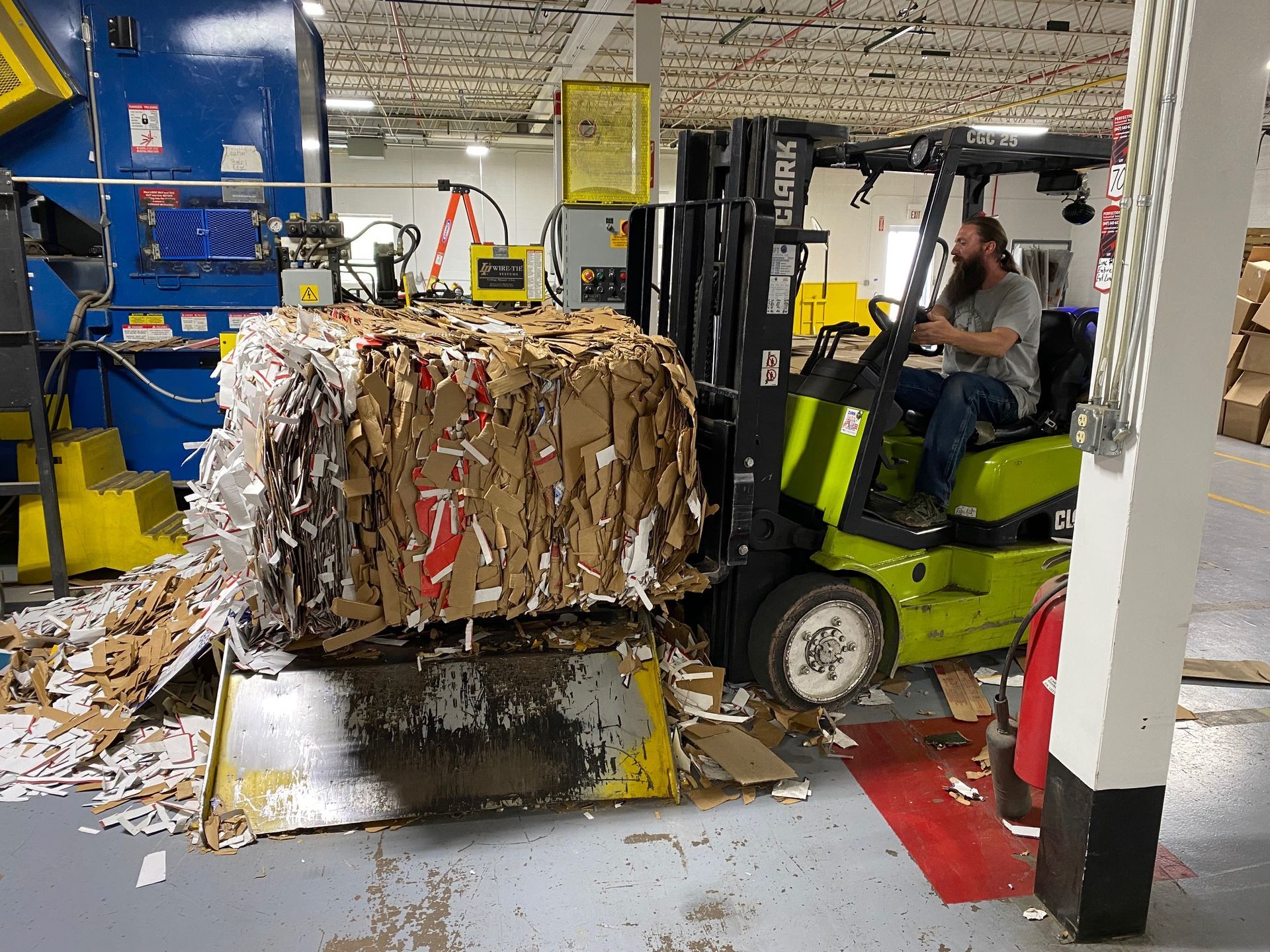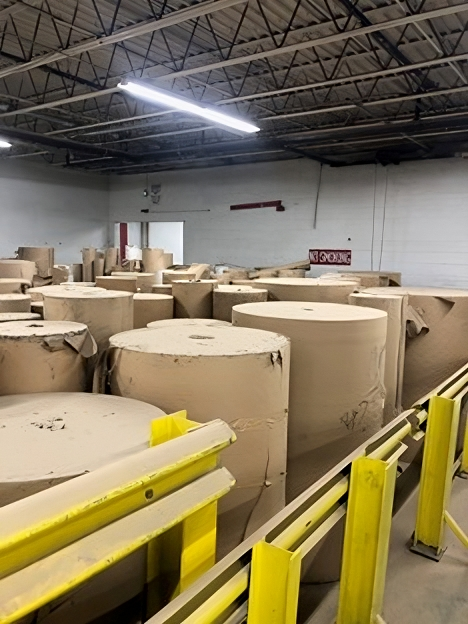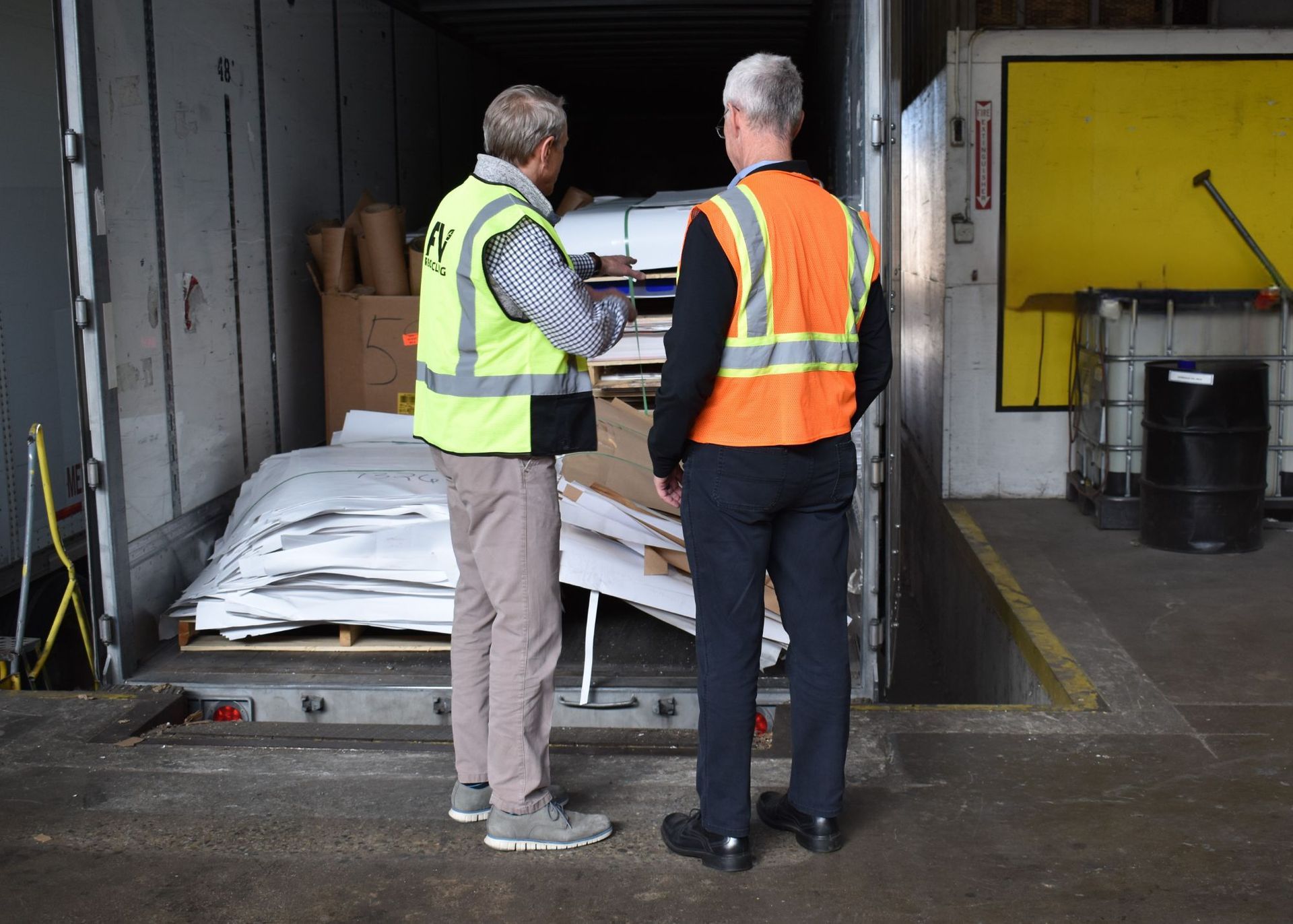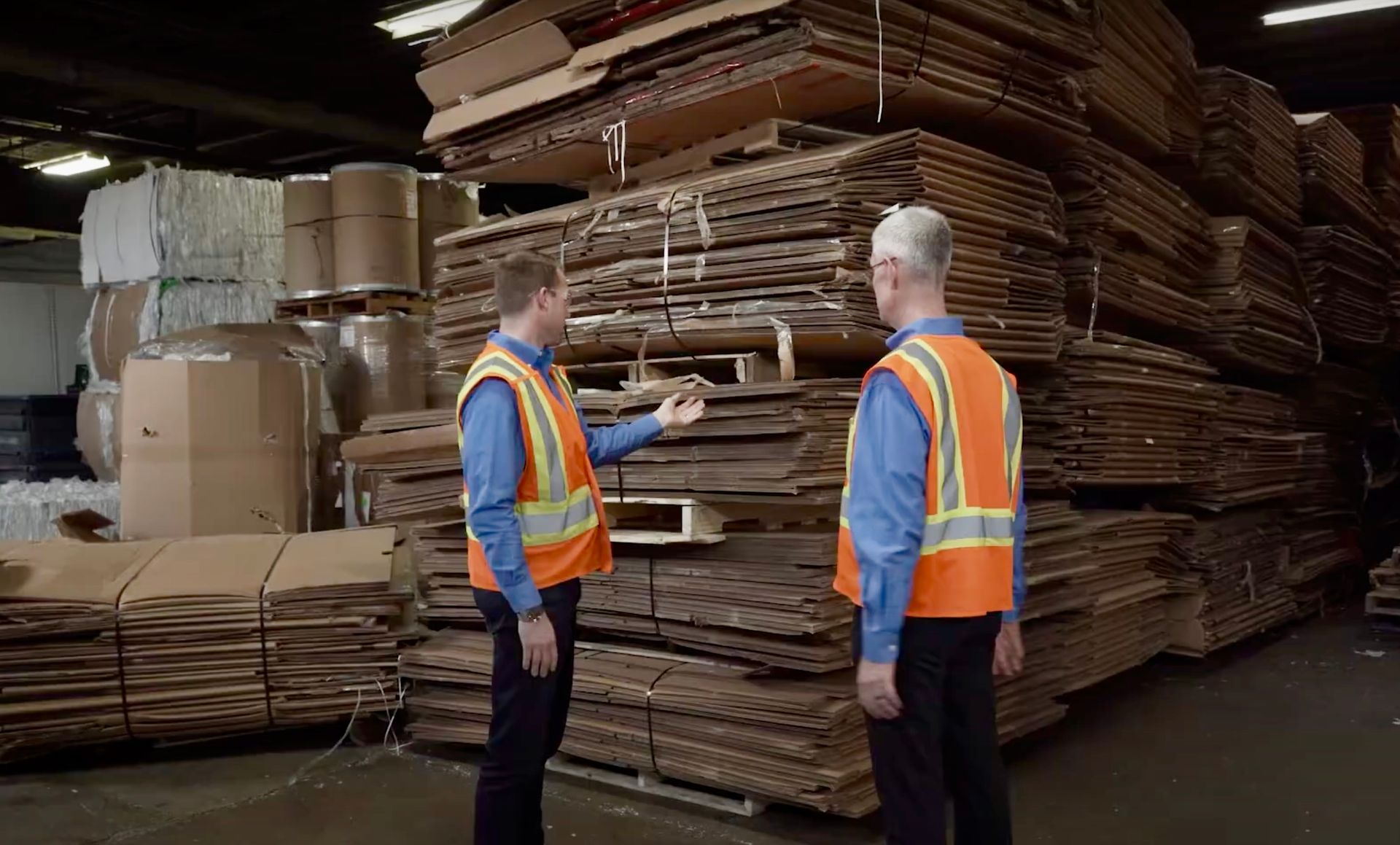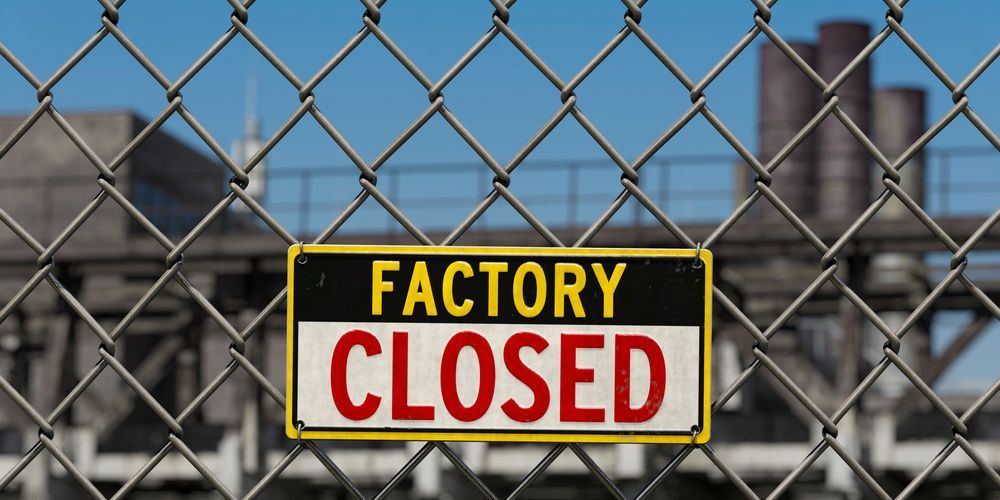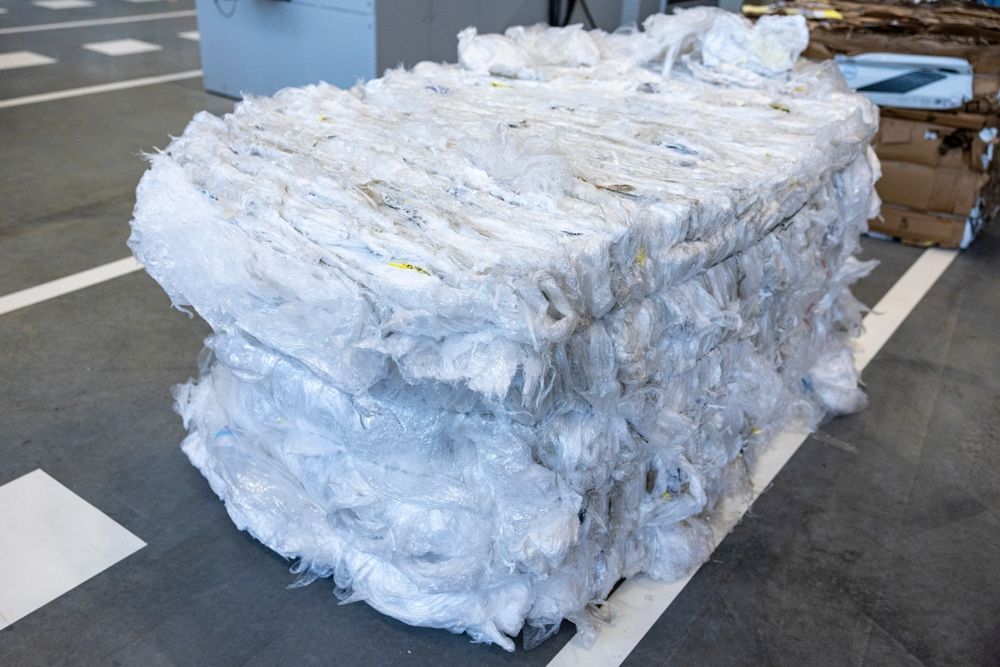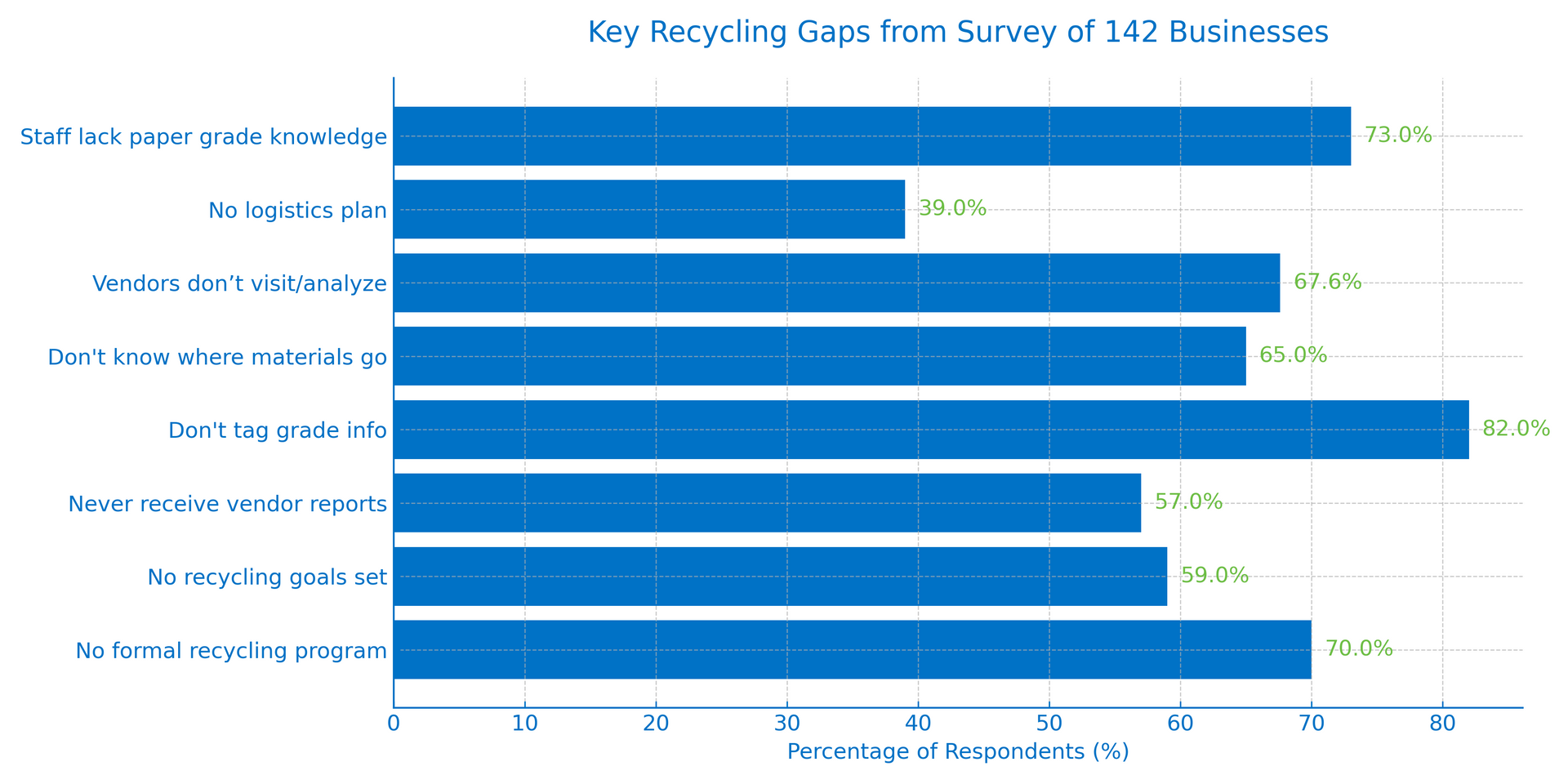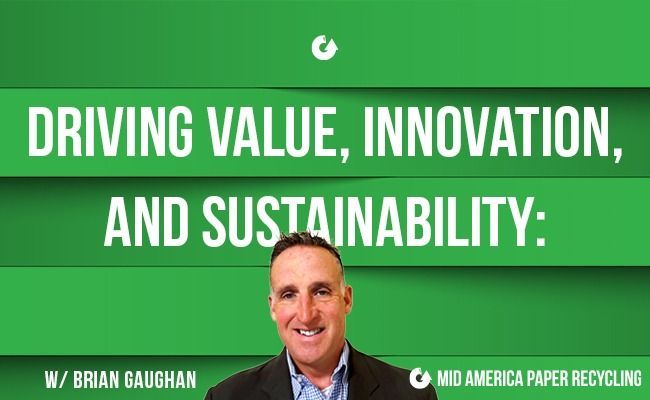How to Gauge Inbound Loads
U.S. paper mills supply paper, pulp and paperboard to more than 5 billion people worldwide, generating approximately 500 million tons of paper year. Paperboard being a highly renewable resource, recovery is crucial. Corrugated has one of the highest recycling rates of recyclable materials. But as many paper and fiber mills know, too many contaminants in the mix can ruin an entire incoming load of what appears to be high quality used material and recycled board.
Mills often deal with household and retail contamination, which range from plastic bags and tape to medical waste and even garden hoses and bowling balls. Such unacceptable items can obviously clog and/or prevent mill machinery from operating properly, requiring costly stops or even shutdowns and equipment repairs.
The decisions in the field aren’t always easy. Mill sorters and inspectors must be quick to spot as many “troublesome items” in the loads as possible. This leads buyers to think about their program’s relationship with haulers, brokers, MRFs, and more.
So, what does that mean for recyclers and brokers? How can they minimize such issues? We asked Kevin, a Procurement Manager/Buyer at a corrugated mill in the Midwest, for a perspective on industry standards. He discussed the mill’s internal guidelines and best practices related to purchasing recycled material.
Converting 100-percent post-industrial-recycled paperboard and post-consumer Old Corrugated Container (OCC) #11 scrap, the Midwestern mill produces several weights of corrugated medium (also called fluting) sheet used in the production of “new” corrugated shipping containers. Its medium weights range in caliper, depending on customer needs. “We’re a 100-percent-recycled brown-paper mill,” Kevin says. “I spend most of my time buying the raw material from brokers and the municipal recovery facilities.”
With unpredictable gluts and scarcities of the single-stream mix and frequent price fluctuations, Kevin can attest there are many things to consider when receiving, sorting and processing raw materials (or not). “We buy material picked up by brokers and recycling plants and a few other outlets and buy bales of used corrugated from big box retailers,” the procurement manager explains.
His mill relies in part on industry guidelines from the Institute of Scrap Recycling Industries, Inc. as a foundation of its standards. “Their guidelines include various paper grades and are acknowledged by all paper mills in the industry,” he notes.
A clean stream, quality considerations With many market changes on the supply side of the business in the last year, and more going forward because of the coronavirus, mills today have significant leverage and price scrutiny in what they accept. That means this and other mills in the Midwest can drive prices down on OCC and other materials.
“We’re in a pretty good space, considering the expansion of Amazon, e-commerce in general, and all the shipping being done where businesses need strong, durable containers,” Kevin points out. So how picky can the mill be? Traditionally, performance, cost and quality were the key criteria behind material selection.
They still are. But the changing times mean receiving very clean, high quality incoming corrugated loads is the new cost of doing business. “As the need for a cleaner stream becomes clear, we urge haulers and local programs to take additional steps to reduce contamination,” he says. “We have a good handle on what we bring in. In the medium business, that absolutely matters.”
Recycled-paper mills are no different than other manufacturing firms. “We have a quality control program for our materials and specs we need to hit,” Kevin points out. “Within those specs, there’s a certain contamination limit we want our supplier base to adhere to and minimize at all costs.”
Contaminant items to avoid:
- Inner packing material
- Foam pieces
- Product cushioning
- Dividers
- Plastic
- Tape.
- Food waste
- Wax coatings
- Other substances
We don’t want any
There are a few headaches surrounding incoming material and the necessary front-end inspections and ratings the material receives. Most mills have quality control programs that dictate they issue lists of what type of recycled material they can accept from vendors. Usually presented to vendors during qualification, the requirements specify acceptable and unacceptable types, and amount of contamination, and what the mill avoids completely. Also included is a maximum moisture level accepted in bales and compacted materials (see sidebar chart).
“For example, we don’t want large amounts of plastic, tape, foam inserts, produce waste from retail produce boxes, food waste of any kind wax coatings and other substances, and more solid things like soiled linens,” lists Kevin. “We won’t tolerate any type of food waste and anything hazardous to our facility or our workers unloading that material as it comes in. We want to minimize those at all costs — we cannot process that material.”
Contaminants and commingled items can damage baling, cleaning and screening equipment, making the clean paper/fiber material in the loads unusable. Contamination can also injure personnel and waste haulers and cause other threats and hazards to human health and safety.
The mill’s processing systems are designed to eliminate many of the paperboard impurities in recycled material, but once those impurities exceed certain thresholds, they can really play havoc with machinery, Kevin confirms.
Given the global health crisis right now, along with hazardous and medical waste (medical devices, new /used syringes, bottles, swabs, etc.), one especially egregious pain point can end up in what looks like perfectly clean corrugated arriving straight from a distributor.
“Inner packing material, foam pieces, product cushioning and dividers, plastic pieces and other components shipped inside a container with the products. Sometimes, these are not removed before the loads get to us,” Kevin adds. “Too many pieces getting into our system could essentially shut down our equipment. We will send back that kind of material.”
Balancing, benchmarking the scorecard
The mill sees prices rise and fall with supply and demand, which affects quality. “We can always tell when something’s happening in the market, based on the quality of the material,” Kevin says. The mill negotiates prices based on supply location to the mill, quality of the fiber and freight costs.
Upon qualifying a new vendor, the mill discusses its quality expectations in terms of cleanliness and its pain points first. “Quality is discussed up front, as well as the types of sources we work with and those we stay away from,” Kevin adds.
Outlining its guidelines, the mill specifies contaminant limits in percentages and grades of A, B, C. The three letter grades designate A, a bale in pristine condition, (completely clean and smooth with no issues); B minor contamination; and C, lower quality with assorted contaminants, with grade C being minimized as much as possible.
If incoming loads exceed those limits, they’re subject to price downgrades; too many downgrades, and the loads are rejected. Too many rejections, and the vendor is banned.
The audit process
Buying material on a per-ton basis, the mill begins to take delivery from a new vendor with an assessment of the first truckload of material (roughly 20 tons) that arrives. To ensure the load meets industry standards as well as the mills’ own quality specifications, the recycling crew offloads and then separates a few bales to sample and split open (each truck contains an average of 30-40 bales), pulling out the contaminants and actively evaluating the material.
The crew weighs the contaminated material, after which a percentage of the contamination is calculated with the amount of clean material received, and the data is later recorded and relayed to the supply base.
“We photograph the contaminants and anything that looks sketchy,” Kevin notes. The information and photos are presented to the supplier, indicating the delivery did not meet the mill’s quality standards. “This audit gives us a Quality Management Benchmark,” Kevin reports. Although the process is tedious and time consuming, the data we get from it is very powerful.”
One problematic load isn’t cause for extensive action, he points out. “It’s when we get multiple offenses and have already had a conversation with them and have issued them a warning. We must uphold stringent quality standards. If the quality isn’t being addressed, and new deliveries coming in are still problematic, then we escalate a process leading to deductions, billbacks and, if necessary, ultimately rejection from our facility. After that, if the material from that vendor is still unacceptable, the entire shipment can be rejected and sent back. We then put the provider on high alert, which can be expensive for a supplier. We will no longer do business with a repeat offender.”
A ban doesn’t happen very often, Kevin says. It basically comes down to each mill’s internal standards – which are usually proprietary – and what it will tolerate, process and be able to use. “Every mill has its own set of specifications and tolerance level. Specifications beyond the industry standards vary, depending on the type of machinery, screening systems and cleaning systems in place.”
Kevin expects the mill will soon implement a more extensive scorecarding and tracking system for rising and falling contaminant levels, with individual reports that identify supplier trends and histories. “We’re working on compiling the audits into data that will allow us to regularly track and monitor problems, successes and so on, with measurable key performance indicators,” he says.
“Transparency is everything. Continuous feedback and engagement with our brokers and haulers solve issues. We also value partnerships, idea sharing with our suppliers and tips and extra value we can offer each other.”
Leave a Reply
Your email address will not be published. Required fields are marked *

